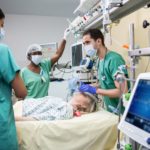 The intensive care unit is quite probably the most intense part of any hospital, with those patients with the severest illnesses and injuries being treated. It’s an environment where decisions are literally life and death, and this places incredible pressure on staff, who place among the highest in terms of stress and burnout.
The intensive care unit is quite probably the most intense part of any hospital, with those patients with the severest illnesses and injuries being treated. It’s an environment where decisions are literally life and death, and this places incredible pressure on staff, who place among the highest in terms of stress and burnout.
A recent study by Stanford University proposes using technology, and specifically AI, to try and ease the burden. The paper highlights an AI-driven system to monitor the patients in ICU around the clock, with a particular focus on monitoring their movements from day to day. The rationale was that movement is a good indicator of physical and mental health, and helps to prevent muscle atrophy and improve healing.
The researchers installed sensors in the rooms of seven patients over a two month period to collect a range of information about their movements. Algorithms were then developed to analyze the data collected and to identify when the patient left their bed (or returned to it). It was even capable of detecting if they got into or out of a chair.
Smart monitoring
First things first, the algorithm was able to successfully identify movement, and indeed the type of movement 87% of the time. It was less successful at identifying the staff involved in any procedure, with accuracy on this task falling to 68%. The researchers are confident that both could be improved with more sensors in the room however.
So how useful is such technology? It’s probably fairest to say this is still a very early stage project, with the accuracy levels a bit below that normally demanded of AI-based systems. The ICU has a long history of 1-to-1 care as well, so it’s not immediately evident how useful, or feasible it would be to propose a technology that would aim to allow nurses to care for multiple patients with similar success.
With patients rarely without any staff present, the ability for technology to detect falls or other forms of movement may not actually be either useful or labor saving. That, of course, also assumes that patients move a significant amount, which I am not sure is the case in ICU, where the majority of patients are sedated.
The authors do say that they worked with medical professionals throughout their study, and it’s quite possible that not all healthcare providers offer a 1:1 or even 1:2 ratio in ICU, in which case such autonomous monitoring may be useful. It seems unlikely that such technologies will be seen in many ICU wards in the western world however.